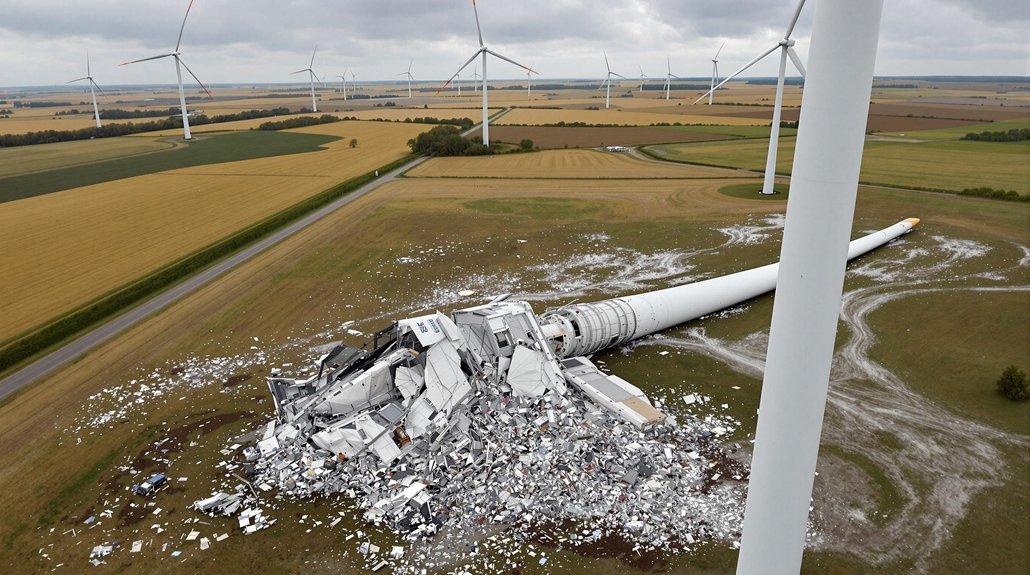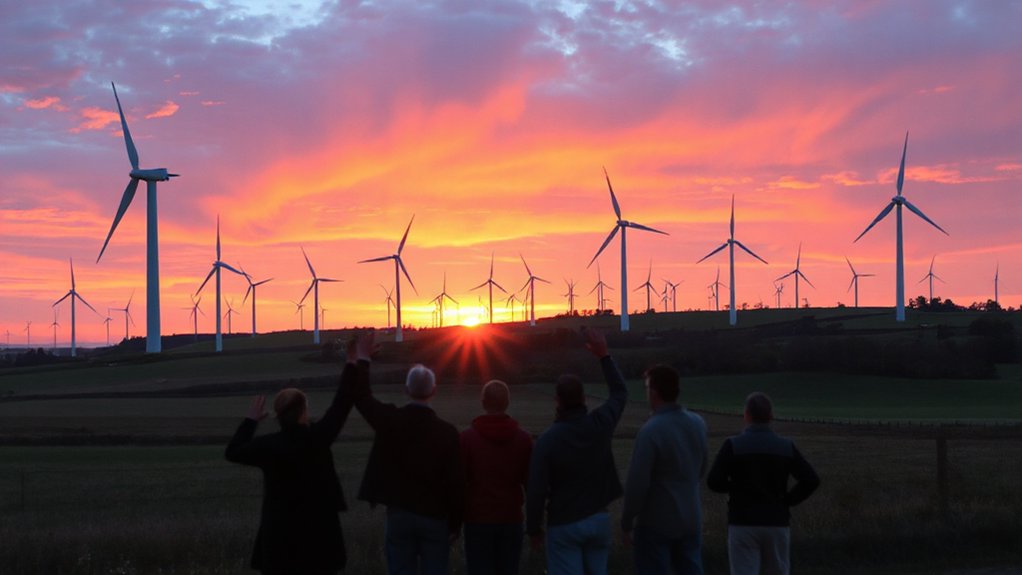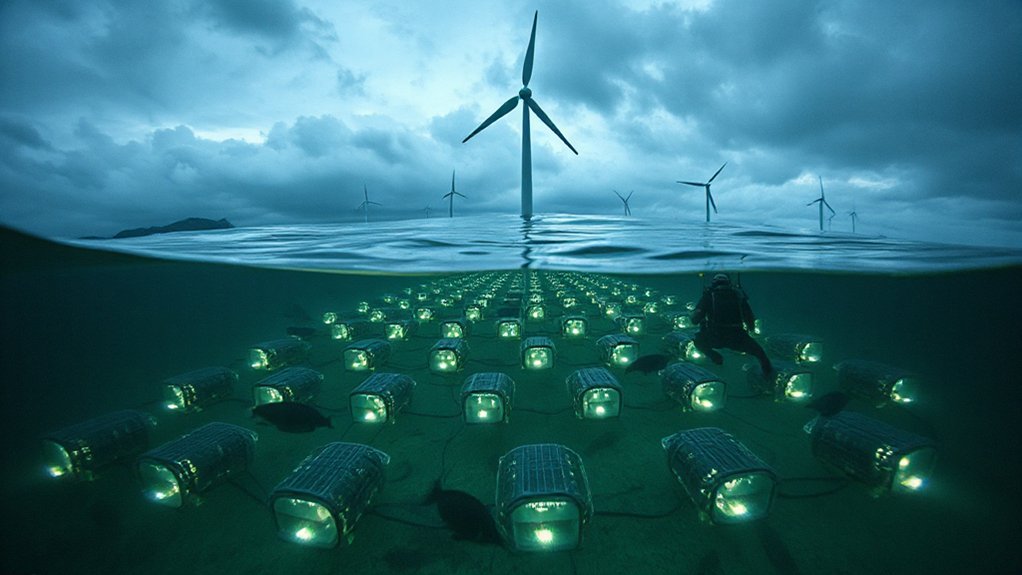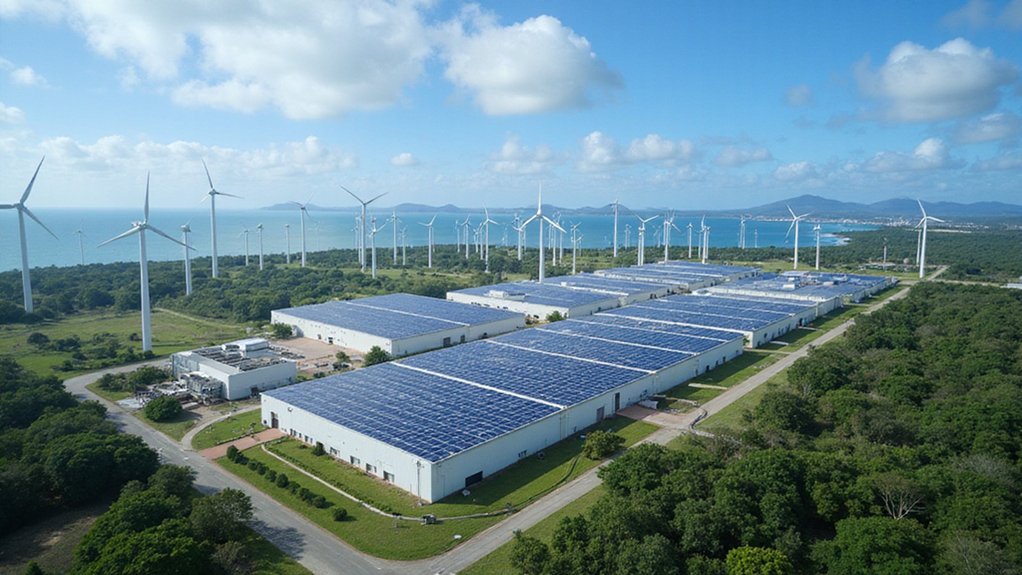Ameren Missouri’s High Prairie Renewable Energy Center has shut down after three Vestas turbine collapses in 2024. The incidents occurred in April, August, and November, with the latest collapse sending blade fragments scattering across the area. All turbines at the 400MW facility spanning Adair and Schuyler Counties are offline for inspection. Ameren and Vestas are investigating potential causes including manufacturing defects and weather conditions. The unusual series of failures raises significant concerns for the wind energy sector.
After experiencing three separate turbine collapses in 2024, the High Prairie Renewable Energy Center in Missouri has temporarily shut down operations. The 400 megawatt wind farm, owned by Ameren Missouri, began operations in 2020 and spans Adair and Schuyler Counties.
The first turbine collapse occurred on April 29, 2024, when the entire top of a turbine fell to the ground. The second incident happened on August 25, 2024, followed by a third collapse on November 1, 2024. In the most recent incident, witnesses reported that the blades fell first, with two of them shattering. The base then bent and collapsed on itself. Nearby residents heard a loud boom, and debris scattered across the surrounding area.
A trio of catastrophic turbine failures has rocked the High Prairie facility, with falling blades and collapsing towers shocking nearby residents.
No injuries have been reported in any of the three incidents. Ameren Missouri quickly enacted its emergency response plan after each collapse. The company secured surrounding areas and took the entire facility offline for assessment. All Vestas turbines in both counties have been shut down while thorough inspections take place.
The exact causes of these collapses remain under investigation. Experts are examining potential manufacturing defects, weather conditions, and maintenance records. Vestas, the turbine manufacturer, is working with Ameren to determine why these failures occurred. Each modern wind turbine typically features 210-foot blades and stands on towers reaching 320 feet high, making structural integrity paramount for safe operation.
These incidents have raised serious concerns within the renewable energy industry. They highlight the need for enhanced safety measures, improved manufacturing quality, and better monitoring technologies. Modern systems now use sensor-based monitoring technologies to track critical parameters like vibration and temperature for early detection of potential failures. The collapses may represent a setback for renewable energy expansion plans in the region. Local farmers have expressed worry about agricultural disruptions as debris from turbine failures could impact crop harvesting and livestock operations.
Looking ahead, Ameren plans to conduct a thorough assessment of all turbines at the facility. The company will review turbine design and manufacturing processes before recommending changes. Enhanced safety protocols and more frequent maintenance schedules are likely outcomes of this investigation.
The long-term impact on public perception of wind energy remains uncertain, but industry leaders stress that such multiple failures at a single facility are highly unusual in modern wind farms.








